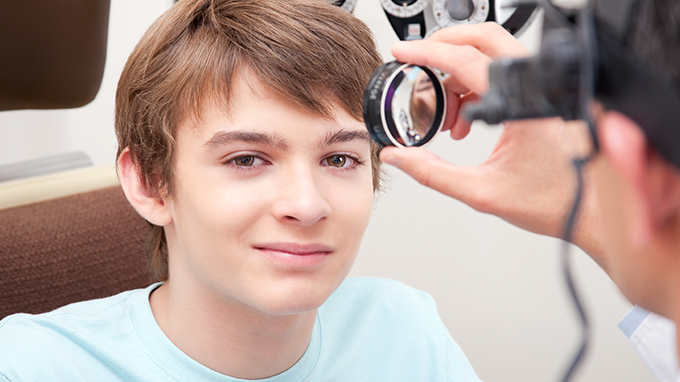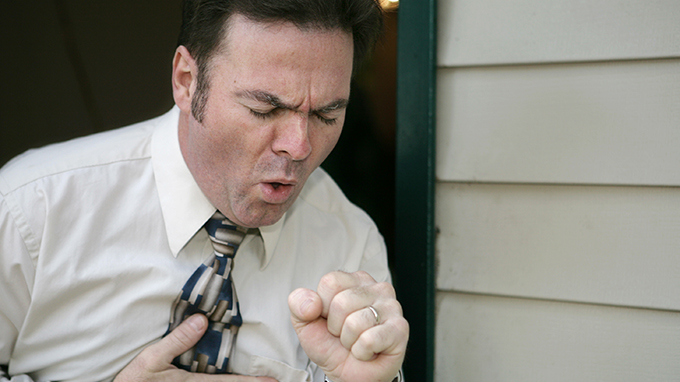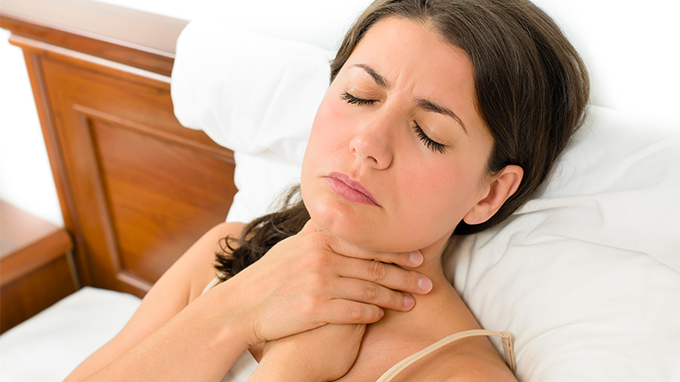Infant asthma and treatment
Children''s bronchial asthma is a common disease that seriously endangers children''s health. There are nearly 30 million asthma patients in my country, of which children account for one third, and the incidence of asthma is higher than that of adults. Many adult asthma develops in childhood and does not get standardized treatment. However, due to the lack of understanding of the disease by parents and many doctors of the children, the patients who received standardized treatment only accounted for about 2%.

Pediatric asthma There are many types
Asthma may occur in people of any age. However, most of them can be divided into asthma of infants and young children younger than 5 years old and asthma of children older than 5 years old from childhood. The symptoms and diagnostic criteria are slightly different.
At present, according to age, clinical manifestations and predisposing factors can be divided into the following types:
Childhood asthma: characterized by repeated wheezing, chest tightness, and often worse at night. This asthma can be caused by respiratory infections or exposure to allergens, such as: mites, pet fur, and pollen. This type of asthma belongs to children of older ages (over 5 years old).
Infant asthma: generally within 5 years of age. The attack is related to respiratory virus infection. It is characterized by viral respiratory infections at the beginning, especially respiratory syncytial virus (RSV), and repeated wheezing afterwards. If there is no family history of allergic diseases, most wheezing will stop after 3 years of age.
Allergic asthma: often seen in children with eczema, or food allergies, or parents with a history of asthma or allergic rhinitis, wheezing attacks after certain allergen triggers.
Cough variant asthma: characterized by long-term cough lasting more than 1 month, anti-infective treatment is ineffective, no fever, only cough, no murmur in the lungs, it is effective with bronchodilators or according to asthma treatment.
Sports Asthma: There is no wheezing attack at ordinary times, wheezing occurs during exercise, shortness of breath, suffocation.
No matter what type, many will have their first wheezing within the age of 3 years. For repeated wheezing with risk factors, early intervention can be performed.
Causes of asthma in children
First, it is caused by genetic factors. Boys are more common in girls, and people with allergies have more asthma than asthma.
Second, indoor factors include allergic asthma caused by mites; mildew in damp corners, bathrooms, and refrigerators; cockroaches are also an allergic factor; and allergies caused by pet dander can not be ignored .
Third, asthma caused by the environment. The pollen in the air, especially after the spring flowers are warm, the pollen of trees and flowers can cause allergies. Be careful of autumn weeds.
Fourth, respiratory infections are also a cause of asthma.
Fifth, pollution in the air.
Sixth, food allergies are also a kind, but the real allergies caused by a certain kind of food are relatively small, generally do not easily get rid of asthma.
Seventh, smoking and passive smoking, many current studies have shown that in the environment, parental smoking and passive smoking have a significant impact on future children''s asthma.
Eighth, environmental pollution caused by decoration, some chemicals can also cause wheezing. Some children do not wheeze, and when they encounter such substances, they will suddenly have an asthma attack. Adults must pay attention.
Ninth, some children are more sensitive to warm air and more sensitive to exercise. Under normal circumstances, you can properly prevent in advance, inhale some sprays before exercise, such as drugs such as Shunening.
Symptoms of pediatric asthma
Early detection of traces of childhood asthma
If the baby often has runny nose, sneezing, coughing, etc. Symptoms of a cold, a cold will soon be wheezing, and after a long period of antibiotic treatment has no effect, like this situation is likely to be asthma.
Some babies will have stubborn cough after vigorous exercise or cold, and it also has no effect after a lot of anti-inflammatory treatment. Some babies only have symptoms such as itchy nose, sneezing, and runny nose at first. Parents often think that the baby is suffering from rhinitis and will not pay too much attention. In fact, a considerable part of these babies considered to have rhinitis will develop asthma in the future.
Symptoms of acute asthma in children
*In an acute attack, the child is restless, sitting and breathing, shrugging and wheezing, with difficulty in exhalation It is even more pronounced, with a pale complexion, flapping nostrils, bluish lips and nails, cold sweating throughout the body, and assisted contraction of respiratory muscles. Older children will complain of chest tightness, shortness of breath, or even continuous words when speaking.
*After proper treatment, if you can discharge white viscous sputum after coughing, the symptoms can be slightly alleviated.
*Infants and young children often hug their parents and hold their heads on the parents’ shoulders, feeling uneasy and irritable.
*Three concave signs appear when inhaling. There can be wheezing sounds on auscultation, and sometimes breathing sounds can be covered by it, such as severe airway obstruction, breathing sounds can be significantly weakened.
*Heart rate is often accelerated. When emphysema occurs, the liver and spleen can be touched under the ribs. In severe cases, heart failure can be complicated.
Parents should not treat children’s asthma as a cold
The initial symptoms of some infants and young children are runny nose, repeated or persistent cough, or accompanied by respiratory infection There is wheezing, so it is easy to be misdiagnosed as acute upper feeling, bronchitis, pneumonia. Therefore, if the child has a cold repeatedly, it is easy to develop to the lower respiratory tract for more than 10 days, or the use of anti-asthma drugs is effective, then the possibility of asthma should be considered. Never use antibiotics and cold medicines endlessly as simple respiratory infections.
How to diagnose pediatric asthma
Detailed medical history, search for incentives, understand family and allergic history, combined with wheezing sounds in children’s lungs diagnosis.
If you have any of the following symptoms or characteristics, you should consider asthma:
* Repeated coughing, wheezing, repeated breathing difficulties, and chest tightness.
*Have a history of eczema, allergic rhinitis, asthma or family history.
*Special attention should be paid to patients whose cough lasts for more than one month, antibiotics are ineffective, and bronchodilators are effective.
Children’s asthma is easily confused with which diseases
①Bronchiolitis: more common in infants under 2 years of age, frequent in winter and spring, can be epidemic , Its dyspnea occurs relatively slowly and responds poorly to bronchodilators. If you have bronchiolitis repeatedly and have a history of allergies in your family, you should pay attention to infant asthma.
② Wheezing bronchitis: manifested as bronchitis with wheezing, wheezing disappears with inflammation control; although there is wheezing but no obvious breathing difficulties; the attack is slow, but not sudden or sudden stop, the course of the disease continues About 1 week; with age, the number of wheezing episodes gradually decreases, but there are still about 10% wheezing bronchitis that later change to bronchial asthma.
③Airway foreign body: persistent asthma-like dyspnea may occur, but the obstruction of foreign body is mostly in the trachea or large bronchus, the main performance is mainly inhalation difficulty, and asthma is mainly exhaled breathing difficulty . Foreign bodies such as in one side of the trachea, wheezing and other signs are limited to the affected side.
④ Bronchial lymph node tuberculosis: can cause intractable cough and asthma-like breathing difficulties, but there is no significant paroxysmal attack. Tuberculin test is positive, X-ray chest X-ray or CT examination is helpful for diagnosis.
What are the current treatment methods for pediatric asthma?
Asthma treatment goals are to achieve complete control, which requires long-term systematic treatment, including inhalation and oral medication. Generally, the treatment time for children from 0 to 3 years old is about 1 year, which is shorter than that of older children. Due to the immature development of infants and children with bronchopulmonary development, the treatment can be stopped for a period of time. If you continue to wheeze after stopping the drug, you can choose a longer treatment.
Asthma treatment
※Relief drugs are drugs used on demand, which can quickly relieve clinical symptoms. Control drugs are used to prevent asthma attacks, and should be used for a long time to achieve asthma control through anti-inflammatory effects.
Relief drugs are:
①Inhaled fast-acting β2 receptor agonist: It is the most commonly used drug during asthma attacks, mainly for the relief of acute exacerbation of asthma, and the commonly used drug is albuterol aerosol Agents (Vantolin) and Terbutaline (Chuankangsu), which take effect quickly after inhalation, should be used as needed with the minimum dose and the minimum number of times as needed.
②Aerosolized inhalation medicine: In the hospital, treatment can use an air compression pump to aerosolize the salbutamol solution or boriconi suspension, which can quickly relieve asthma attacks.
③Short-acting theophylline: It can relieve the symptoms of asthma. Because the therapeutic amount of theophylline is close to the amount of poisoning, it has been rarely used.
④ Systemic glucocorticoid: It can prevent the exacerbation of asthma. The commonly used drug is intravenous methylprednisolone, which can improve the severity of asthma after treatment. The course of treatment is 3 to 5 days.
※Asthma control drugs are:
①Inhaled glucocorticoid (ICS): is the most effective anti-inflammatory drug, which can relieve asthma symptoms, Improve lung function. Commonly used drugs are fluticasone propionate (prosulone) and budesonide aerosol. Inhaled ICS for the treatment of asthma is currently the most effective drug. There are no obvious side effects for long-term treatment and it does not affect the growth and development of children. It should be promoted vigorously.
② Inhaled ICS combined with long-acting β2 receptor agonist (LABA): the current preferred combination treatment for asthma treatment, combined treatment can improve asthma treatment effects, reduce drug side effects, and enable more children to achieve asthma control faster. Commonly used drugs are salmeterol fluticasone combination (sulide) and formoterol and budesonide combined dosage form (Xinbico).
③ Leukotriene modulators: Leukotriene modulators exert anti-inflammatory effects by antagonizing leukotrienes, in addition to mild bronchiectasis, can relieve symptoms, improve lung function, reduce Acute attack of asthma. The commonly used drug is montelukast sodium (shunning), which is more convenient to use by oral administration without obvious side effects, and it has a good effect on asthma caused by exercise and respiratory virus infection.
④Long-acting theophylline: It has a certain anti-inflammatory effect, can also be used as a control drug, can be used alone, or can be combined with ICS. The commonly used drug is doxofylline. Children''s behavior is abnormal, and it is rarely used for a long time.
Special tips
1. Once the baby has been diagnosed with asthma, the specific medication plan should be based on the baby’s specific condition and lung function to develop a reasonable treatment plan, so it is best to The doctor visits the specialist and establishes a file with the doctor. At the same time, the parents keep a diary of the asthma for the baby, and long-term follow-up is the key to treatment. As long as the regular medication (the drug is gradually reduced) is about 2 years, most babies can achieve clinical cure or even recovery.
2. When the baby is treated, the obvious characteristics of the improvement are: the child’s cold rate is greatly reduced, and the number of wheezing attacks is also significantly reduced.
Allergic rhinitis has a great impact on asthma
*Allergic rhinitis is often an early manifestation of asthma. Before the onset of asthma, it manifests as itchy nose, Sneezing, runny nose, stuffy nose, followed by wheezing, coughing The essence is that the same pathogenic factors cause allergic inflammation in the upper and lower airways. Asthma is an allergic disease, often accompanied by other systemic atopic diseases, such as skin eczema and allergic rhinitis.
*Children with asthma often get a history of infant eczema, but the proportion of those with allergic rhinitis is higher, about 40%. Allergic rhinitis is accompanied by asthma, while 80% xFF05; Children with asthma have allergic rhinitis.
*During the onset of active allergic rhinitis, some children show increased airway responsiveness. The level of airway reactivity is closely related to the severity of asthma attacks, and mild airway hyperresponsiveness is expected to recover However, moderate or high airway hyperresponsiveness exists for a long time. Even if the asthma does not occur and the lung function is normal, the risk of asthma attack is still lurking, like a time bomb. Therefore, in the prevention and treatment of asthma, it cannot be limited to asthma itself, and active measures must be taken to treat allergic rhinitis.
Expert tips: At present, more and more scholars tend to allergic rhinitis and asthma are a disease, allergic rhinitis is the first symptom Then, under the influence of environmental and other factors, it develops into asthma, which eventually leads to chronic airway inflammation and lung function damage.
If your child often suffers from nasal itching, continuous sneezing, runny nose, and nasal congestion, you should pay attention to allergic rhinitis. Because active treatment of allergic rhinitis can prevent the occurrence and development of bronchial asthma.
Five Attentions for Home Care of Asthma Babies
(1) Details of the "Family Medical Record" record
Baby for every asthma attack Date, time, location, severity, weather conditions on the day of onset, exposure to special diets and special chemicals, medication, special events that occurred in life within 24 hours before the onset No crying, laughing, etc., must be recorded in detail. In this way, after long-term patient and meticulous observation, analysis and induction, we can find out certain laws of onset and related suspicious factors, so as to take corresponding measures to avoid them.
(2) Arrange a living environment suitable for children with asthma
*Choose a sunny room, keep the room clean, ventilated and dry, and smoking is strictly prohibited; Bedding should use cotton fabrics in the daytime, do not use bedding made of fur, silk cotton or down, etc. The pillow core should use foam plastic instead of kapok, velvet and other real fillings.
*Do you want to keep cats, dogs, rabbits, pigeons, etc. at home, let alone let these animals enter the bedroom of asthmatic children.
*Parents should not use strong-scented cosmetics; all chemical substances with strong odors, such as paint, gasoline, insecticides, etc., should not be brought into contact with the children; mothers should not remove cotton clothes in front of the baby, Quilts or sweaters.
*When buying toys for children, you should choose wood, cloth, metal or materials to make them well. Don''t buy toys made of fur or thick pile. In addition, smell special smells when buying toys, which is better if they are odorless.
*Pay attention to the diet of children. Fish, shrimp, crab, onion, garlic, leek and over-sour and spicy food are better to eat less. If you find that your child has an asthma attack after eating a certain food, you must stop eating that food. It is usually forbidden to eat irritating food and cold and hot food. Give semi-liquid or soft food during the attack to avoid severe asthma.
(3) Avoid the inducing factors
Avoid the inducing factors as much as possible, for example, cold, rain, excessive fatigue, excitement and other stimuli to prevent the inducing asthma.
(4) Medication in time
When asthma attacks, medication should be done in time, such as Vantorin aerosol. These drugs can effectively control the severe attacks of asthma in time. At the same time, the mental stimulation of the children should be reduced, the mental burden should be eliminated, and the children should be encouraged to build up their confidence in resisting the disease.
(5) Sports
usually pay attention to strengthening physical exercise, often go to outdoor activities, enhance physical fitness, improve disease resistance. Although exercise can induce asthma attacks, not all kinds of exercise will stimulate asthma, and some asthma children can reduce the response to asthma as long as they can participate in appropriate physical exercise for a long time.
Related Articles

- Children's bronchial asthma diagnosis and prevention guide
- Bronchial asthma (hereinafter referred to as asthma) is the most common chronic disease in childhood. The prevalence of childhood asthma in China has increased significantly in the past ten
- 2020-08-02

- Newborn pneumonia, what should parents know
- One day, when I went to the outpatient clinic, a young couple came to the clinic with a child who was just a few days old. They said they had just come from another hospital and they had d
- 2020-08-02

- Baby's cold medicine is wrong
- When a baby catches a cold, there will be some symptoms that make her mother have a headache, such as a runny nose, a cough, a fever, and so on. Faced with these situations, many mothers wi
- 2020-08-01

- See the number of colds to understand immunity
- Children''s immunity is still improving, and they are more likely to get sick. Therefore, what most parents care about is what they eat to improve the child''s immunity, so
- 2020-08-01

- For children with asthma, choose Chinese medicine or Western medicine
- The newly admitted young patient, 5 years old, girl, has a bad spirit and is coughing constantly on his father''s shoulder. As soon as the stethoscope touched the back of the child,
- 2020-08-01

- Keep children away from coughing
- (1) Acute cough and chronic cough From the perspective of diagnosis, we artificially divide cough into three categories: acute cough, subacu
- 2020-08-01
